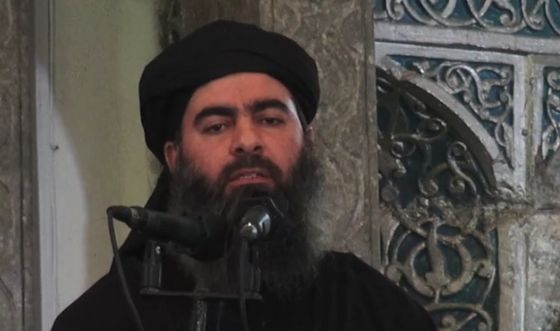
Abu Bakr al-Baghdadi, the ISIS leader and recently self-declared Caliph Ibrahim, ruler of the so-called Islamic State, has until now kept a very low profile.
His first officially released video shows him delivering a sermon in Mosul.
Why the appearance now?
Perhaps in order to dispel rumors that he has been severely injured or might even be dead. Of course such reports might be a ruse to draw him out of hiding and thus make him an easier target to be killed. Either way, there’s no disputing al-Baghdadi’s vulnerability.
International Business Times reports: Abu Bakr al-Baghdadi, the leader of the Sunni militant outfit Islamic State of Iraq and the Levant (Isis), is said to have been severely injured in the raging battle forcing him to flee to neighbouring Syria.
According to a report in the Iraqi news network Al Sumaria, the insurgent leader was injured during a raid led by Iraq’s Shiite-led security forces in the west of Anbar.
“The Iraqi security forces carried out an operation in the city of Qaim on the border with Syria based on accurate intelligence and with the help of the Air Force where the leader of ISIL, Abu Bakr Al-Baghdadi was seriously injured,” said Haidar al-Shara, a representative of the international parliament in Iraq.
However, the report has so far not been independently verified. If confirmed, it will be a severe blow to the militant group which has been marching on several Iraqi cities.
The Iraqi official said: “After being hit, al-Baghdadi, with a range of elements of his organisation fled into Syrian territory because of its proximity to Qaim,” adding: “al-Baghdadi might be killed as a result of the severity of his injuries.”
If al-Baghdadi has indeed fled back to Syria, so much for ISIS’s claim that it has erased the boundary between Syria and Iraq. At this point in time, ISIS appears to recognize that one side of a supposedly non-existent border is safer than the other.

